Lung Cancer Treatment in Bangalore | MACS Clinic
Comprehensive Guide to Lung Cancer: Robotic Surgery and Advanced Treatments
Lung cancer is one of the most pressing health concerns today, affecting countless lives. At MACS Clinic, an exclusive center for cancer treatment in Bangalore, we believe in offering hope and advanced care through innovative solutions. As a trusted destination for lung cancer treatment in Bangalore, we combine cutting-edge technologies like robotic and thoracoscopic surgery with compassionate patient care. Our experienced team of oncologists ensure every patient feels supported and informed throughout their journey.
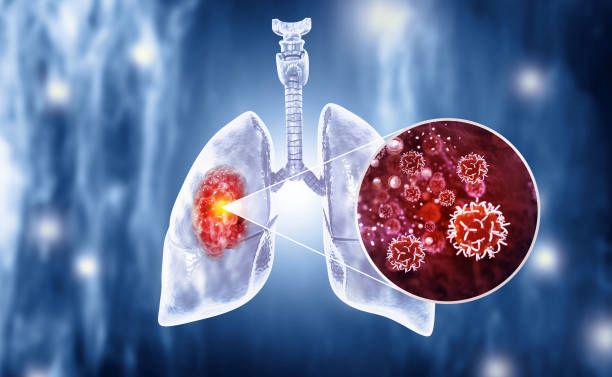
Understanding the Lungs
The lungs are extraordinary organs essential for life. They facilitate breathing and the exchange of gases that sustain the body. Air enters through the trachea (windpipe), branching into bronchi and smaller bronchioles before reaching microscopic air sacs called alveoli. These alveoli perform the critical task of swapping oxygen and carbon dioxide with the bloodstream.
Dr. Sandeep Nayak, a renowned oncologist in Bangalore, explains,
“Lung cancer occurs when normal cells in the lung begin to grow uncontrollably, disrupting this delicate balance. Recognizing the signs early is the first step toward effective treatment.”
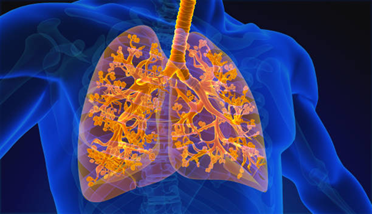
The most common forms of Lung cancer are:
Adenocarcinoma
Symptoms of Lung Cancer
Lung cancer symptoms often remain unnoticed in the early stages, making awareness crucial for timely diagnosis. As the disease progresses, patients may experience:
Chest pain, especially during deep breathing, coughing, or laughing.
Blood-stained or rust-colored sputum.
Hoarseness or changes in voice.
Unexplained weight loss, fatigue, or loss of appetite.
Shortness of breath or difficulty breathing.
If you experience any of these symptoms, it is essential to consult a healthcare provider promptly. Early intervention is vital to successful lung cancer treatment.
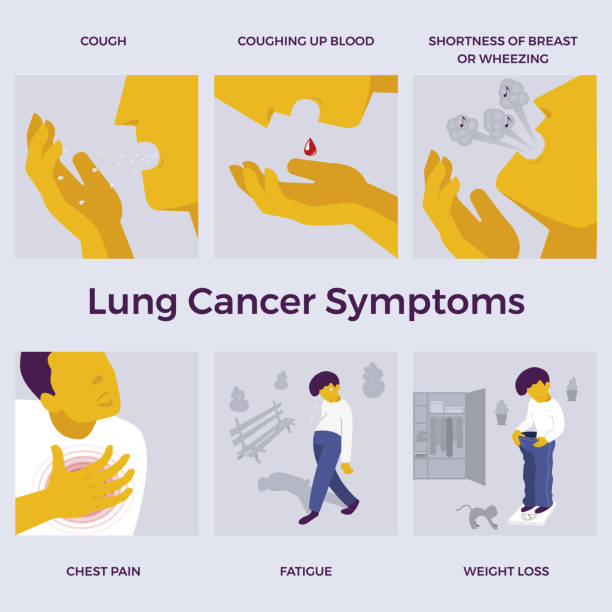
Diagnosis of Lung Cancer
Accurate and thorough diagnosis is vital for effective treatment planning. At MACS Clinic, we use acurate diagnostic tools to comprehensively identify and evaluate lung cancer. The process includes the following:
Core Biopsy: Provides a reliable tissue sample for analysis, offering more accurate results than fine-needle aspiration.
Immunohistochemistry (IHC): Helps determine the type of lung carcinoma and its characteristics.

Liquid Biopsy: Patients for whom repeated biopsies come negative or taking biopsy itself is difficult an advanced blood test called liquid biopsy can be used to detect the cancer DNA in the blood. This is not the best option. However, in some situations this may be only option.
Molecular Genetic Testing: Advanced tests like Next-Generation Sequencing (NGS) identify mutations (e.g., EGFR, ALK, ROS1, KRAS) to guide targeted therapies.
Brain MRI: Conducted in advanced cases to check for brain metastasis.
Imaging Studies: CT and PET-CT scans assess tumor size, location, and spread.
Liquid Biopsy: A Non-Invasive Alternative
For cases where traditional biopsy is not possible, liquid biopsy offers a groundbreaking, non-invasive approach. By analyzing biological fluids like blood, liquid biopsy detects circulating tumor cells (CTCs), circulating tumor DNA (ctDNA), and other biomarkers. This technique can confirm the diagnosis, identify genetic mutations, and guide targeted therapy.
Advantages of Liquid Biopsy:
Safer for patients unable to undergo traditional biopsy.
Offers detailed genetic insights about the tumor.
Helps monitor treatment response and detect recurrence.
This innovative technique is particularly beneficial in advanced lung cancer cases where tissue biopsy is challenging or risky.
Staging of Lung Cancer
The staging of lung cancer helps determine the extent of the disease and guides treatment decisions. It is based on the tumor’s size, spread to lymph nodes, and metastasis to other organs.
Stage 1 & 2: The cancer is localized to the lung or nearby lymph nodes. Surgery is often the primary treatment option at these stages. Minimally invasive techniques like video-assisted thoracoscopic surgery (VATS) or robotic surgery are used for these stages.
Stage 3A: The cancer has spread to nearby lymph nodes, but may still be operable Treatment often involves a multidisciplinary approach, which may include chemotherapy, radiation, and possibly surgery, depending on the extent of lymph node involvement and the patient’s condition.
Stage 3B: The cancer has spread to lymph nodes on the opposite side of the chest or above the collarbone. Surgery is generally not feasible, and treatment involves chemotherapy and/or radiation. Immunotherapy (e.g., immune checkpoint inhibitors like durvalumab) following chemoradiation has shown significant improvements in survival for Stage 3B patients in recent years.
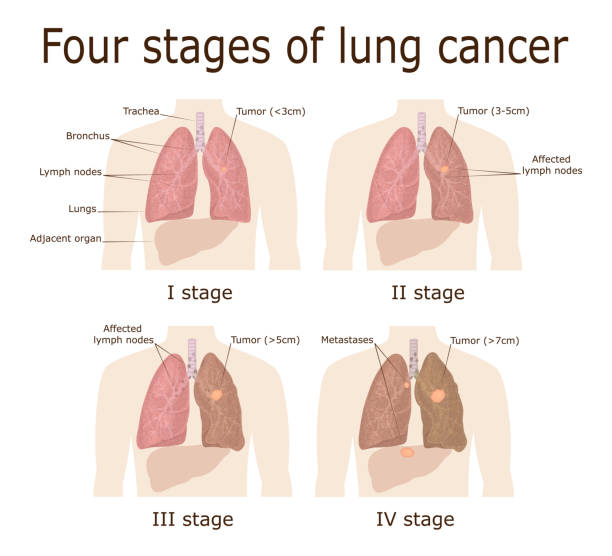
Stage 4: The cancer has metastasized to distant organs, such as the liver, brain, or bones. Generally, surgery cannot cure stage 4 cancer, advancements in treatments like targeted therapy and immunotherapy have significantly improved survival rates. Even stage 4 patients can achieve fair survival outcomes with personalized treatment approaches. Stage 4 treatment has significantly advanced with the advent of molecular testing, which identifies genetic mutations or protein expression markers (e.g., EGFR, ALK, ROS1, PD-L1). These tests guide the use of targeted therapies or immunotherapies, which have improved survival and quality of life for many patients. With these advancements some stage 4 cancers are also being considered for surgery as they may be potentially curable.
Surgical Treatment for Lung Cancer
Surgery is a primary treatment option for early-stage lung cancer, offering the best chance of cure. The type of surgery performed depends on the tumor’s size, location, and extent:
Wedge Resection: Removes a small, localized portion of the lung. This is not preferred option for lung cancer.
Segmental Resection: Removes the segment of lung bearing cancer while preserving as much healthy tissue as possible.
Lobectomy: Involves removing an entire lobe of the lung.
Pneumonectomy: Removes an entire lung, typically reserved for advanced cases when necessary.

To ensure precise staging and complete cancer removal, mediastinal lymph node dissection is performed during all surgical procedures. This involves removing lymph nodes in the mediastinum (the area between the lungs) to check for any cancer spread.
Dr. Sandeep Nayak, an experienced cancer specialist in Bangalore, emphasizes,
“Surgical interventions play a critical role in achieving long-term remission in lung cancer patients, especially when combined with other multidisciplinary modalities.”

Advancements in Lung Cancer Surgery
Modern surgical techniques have revolutionized the treatment of lung cancer, offering patients minimally invasive options that enhance precision and recovery.
Robotic-Assisted Surgery (RATS)
Robotic-assisted thoracic surgery (RATS) is a cutting-edge, minimally invasive procedure using robotic systems to perform precise and complex operations. It is particularly effective for early-stage lung cancer, segmental resections, and lymph node dissections.
Advantages of Robotic Surgery:
- Smaller Incisions: Minimal scarring with better cosmetic results.
- Enhanced Precision: High-definition 3D visualization ensures optimal cancer clearance.
- Reduced Pain and Trauma: Faster recovery and less discomfort than traditional open surgery.
- Shorter Hospital Stay: Most patients are discharged by the 4th day post-surgery.
- Improved Outcomes: Superior lymph node dissection and tumor removal.
Robotic surgery is an ideal choice for patients seeking minimally invasive procedures with quicker recovery and excellent long-term outcomes.
Fluorescence-Guided Surgery:
Fluorescence-guided surgery is an innovative technique that uses special dyes or imaging agents to make cancerous tissues glow under specific lighting, enabling surgeons to:
- Detect small, otherwise hidden tumors.
- Remove tumors completely while preserving healthy tissue.
- Minimize the risk of residual cancer.
This approach is particularly valuable in early-stage cancers and complex resections where precision is critical. The technology can be used in many different ways to improve the outcomes.
Segmental Resection: A Lung-Sparing Approach
Segmental resection is a preferred option for patients with early-stage lung cancer or compromised lung function. Unlike a lobectomy, which removes an entire lobe, segmental resection targets only the affected lung segment.
Benefits of Segmental Resection:
- Preserves healthy lung tissue.
- Maintains better lung function after surgery.
- Reduces the surgery’s impact on the patient’s overall quality of life.
Robotic or minimally invasive techniques are commonly used for segmental resections. These techniques ensure optimal outcomes while prioritizing the patient’s comfort and recovery.
These advancements reflect a new era in lung cancer treatment in Bangalore, making surgery more precise, less invasive, and more effective for long-term survival.
Learn why minimally access cancer surgery makes a difference.
Minimally Access Cancer Surgery (MACS): A Patient-Centric Approach
At the forefront of lung cancer treatment in Bangalore, Minimally Access Cancer Surgery (MACS) integrates the benefits of robotic surgery and video-assisted thoracoscopic surgery (VATS). These techniques focus on reducing trauma while maximizing cancer clearance.
The MACS Advantages:
Minimal Pain and Discomfort: Smaller incisions lead to quicker recovery.
Minimal Blood Loss: Significantly reduces the risk of complications.
Cosmetic Benefits: Small scars with better aesthetic outcomes.
Faster Recovery: Most patients are discharged by the 4th day after surgery.
Enhanced Precision: Exceptional visualization ensures superior lymph node dissection and tumor removal.
Why Choose Robotic Surgery for Lung Cancer?
Robotic surgery is rapidly becoming the gold standard for lung cancer treatment. It offers unmatched precision, faster recovery, and superior outcomes compared to traditional methods. According to Dr. Sandeep Nayak, a leading lung cancer specialist in Bangalore,
“Robotic surgery provides a level of precision and control that is not possible with traditional techniques, making it the ideal option for treating lung cancer and ensuring optimal recovery for our patients.”
Robotic surgery is particularly ideal for:
Early-Stage Lung Cancer: When minimal invasion and precision are essential.
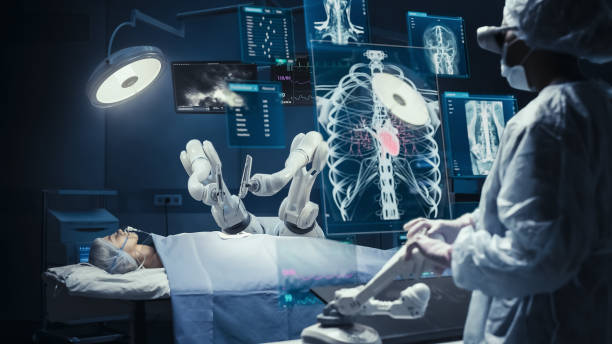
Segmental Resections: For preserving lung function and minimizing tissue damage.
Complex Cases: Where advanced technology offers enhanced visualization and access to difficult-to-reach areas.
By choosing robotic surgery, patients benefit from state-of-the-art technology, reduced pain, and faster recovery—without compromising the effectiveness of cancer treatment. This approach transforms how lung cancer is treated and enables better patient outcomes.
Take the Next Step
If you or a loved one has been diagnosed with lung cancer, early intervention and advanced treatment options like robotic-assisted surgery and liquid biopsy can make all the difference. Speak to our team of experienced lung cancer specialists in Bangalore to explore the best approach for your case.
Our YT links for lung cancer:
Stages of Lung Cancer: https://www.youtube.com/playlist?list=PLoDi8_63T2eIh9-ytLGe8IKvnEx5Ftpp-
Treatment options: https://www.youtube.com/playlist?list=PLoDi8_63T2eKfhnQg8po8cVy62pppUKxK
Lung Cancer Awareness Series: https://www.youtube.com/playlist?list=PLoDi8_63T2eKC4MXyXDqed-52buMEoT7i
Lung Cancer Surgeries: https://www.youtube.com/playlist?list=PLoDi8_63T2eKOAfHaH9GQwcUUAtPqsbdm
Frequently Asked Questions
Can lung cancer be hereditary?
What types of lung cancer are there?
How long does recovery take after lung cancer surgery?
What is the survival rate for lung cancer?
What support is available for lung cancer patients?
Disclaimer: The information shared in this content is for educational purposes only and not for promotional use.
